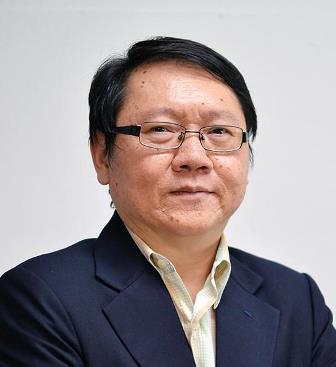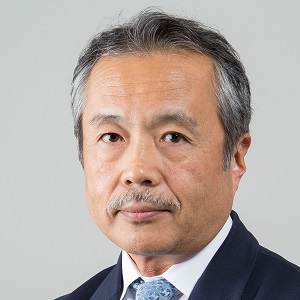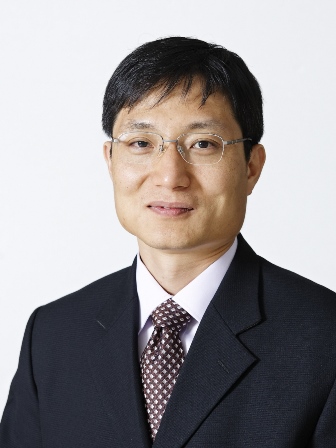
Prince Songkla University (PSU), Thailand
"Biomedical signal and image processing with artificial intelligence"
Short Biography:
Pornchai Phukpattaranont received the B.Eng. (Hons.) and M.Eng. degrees in electrical engineering from the Prince of Songkla University, Songkhla,Thailand, in 1993 and 1997, respectively, and the Ph.D. degree in electrical and computer engineering from the University of Minnesota, Minneapolis, MN, USA, in 2004. He is currently an Associate Professor of Electrical Engineering with the Prince of Songkla University. Examples of his ongoing research include the pattern recognition system based on electromyographic signal, electrocardiographic signal, and microscopic images of breast cancer cells. His current research interests include signal and image analysis for medical applications and ultrasound signal processing. Dr. Phukpattaranont is a member of the IEEE, the ECTI Association and Thai Biomedical Engineering Research Societies.

Graduate School of Biomedical Engineering, Tohoku University, Japan
"The Importance of Home-Built Equipment in Novel Imaging Research"
Short Biography:
Yoshifumi Saijo received the M.D. and the Ph.D. degrees in 1988 and 1993 from Tohoku University. He had been trained as a cardiologist in some hospitals in Sendai area. He became Assistant Professor of Institute of Development, Aging and Cancer (IDAC) at Tohoku University in 1997. He became Guest Professor at Aarhus University, Denmark in 1999 and he became Associate Professor of IDAC at Tohoku University in 2004. He has been a Full Professor of the Biomedical Imaging Laboratory of the Graduate School of Biomedical Engineering at Tohoku University. He is concurrent with Graduate School of Medicine, IDAC and Clinical Technology Department of University Hospital at Tohoku University. He has been Director of Medical Device Innovation Center since 2014. He has been Deputy Director of Graduate School of Biomedical Engineering since 2020. His main research interests include high frequency biomedical ultrasound imaging, cardiovascular blood flow analysis and photoacoustic imaging. His activity also includes practical and interactive education of medical device innovation.

Managing Director
OSA Technology Sdn. Bhd.
“The Next Frontier: Cutting-Edge Technologies in Medical Research for Future Medical Devices Industry in Malaysia”
Short Biography:
Dr. Hyzan Mohd Yusof is an accomplished orthopaedic surgeon, academic, and entrepreneur, currently serving as the Managing Director of OSA Technology Sdn. Bhd., a leader in medical technology innovation. He holds the position of Consultant & Surgeon of Orthopaedics at Sunway Medical Centre and is Vice Chairman of the Medical Technology Industry Group at the Federation of Malaysian Manufacturers. Dr. Hyzan has been an advisor to Akademi Sains Malaysia and the Ministry of Health, and he serves as the Honorary Secretary for PERANTIM. His academic background includes a Master of Surgery in Orthopaedics and an M.D. from Universiti Kebangsaan Malaysia, along with a sub-specialty in Trauma from the University of Alabama, Birmingham. He has received numerous accolades, including the AAOS Scholarship Award and the title of Most Outstanding Malaysian of the Year in 2005. Dr. Hyzan is also deeply committed to humanitarian work, participating in medical relief missions in conflict and disaster zones, such as Pakistan, Afghanistan, and Syria, which has garnered him international recognition for his efforts in providing healthcare to underserved populations.

University of Ulsan, South Korea
“High-Fidelity Image-Based Computational Hemodynamics: Advancing Precision Cardiovascular Medicine”
Short Biography:
Lee Sang Wook is a distinguished professor in the Department of Mechanical and Automotive Engineering at the University of Ulsan, Korea. With an academic foundation in Naval Architecture & Ocean Engineering from Seoul National University (B.S., M.S.) and the University of Illinois at Chicago (Ph.D.), he is a globally recognized expert in cardiovascular fluid mechanics, biofluid dynamics, and computational fluid dynamics (CFD). His pioneering research bridges theoretical and applied engineering principles with biomedical applications. Over a career spanning more than 20 years, he has made significant contributions to understanding fluid-structure interactions and advancing numerical simulation techniques. His innovative research has applications in vascular health, biomedical imaging, and marine engineering. Prior to his role at the University of Ulsan, he conducted postdoctoral research at the University of Toronto and Robarts Research Institute, focusing on blood flow dynamics and biomedical simulations. He has authored numerous high-impact journal articles and holds patents related to hemodynamic modelling and engineering systems. His contributions have profoundly impacted the understanding of vascular flow transitions and hemodynamic simulations. His accolades include collaborative research with leading institutions like Argonne National Laboratory and transformative patents in fluid-structure interaction for medical applications. His work continues to shape the fields of CFD, parallel computing, and biofluid dynamics, providing actionable insights into medical device design, cardiovascular health, and fluid mechanics across disciplines.